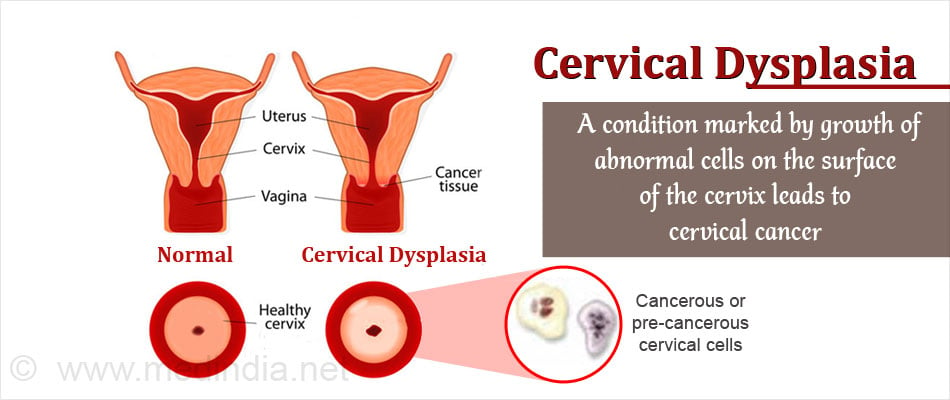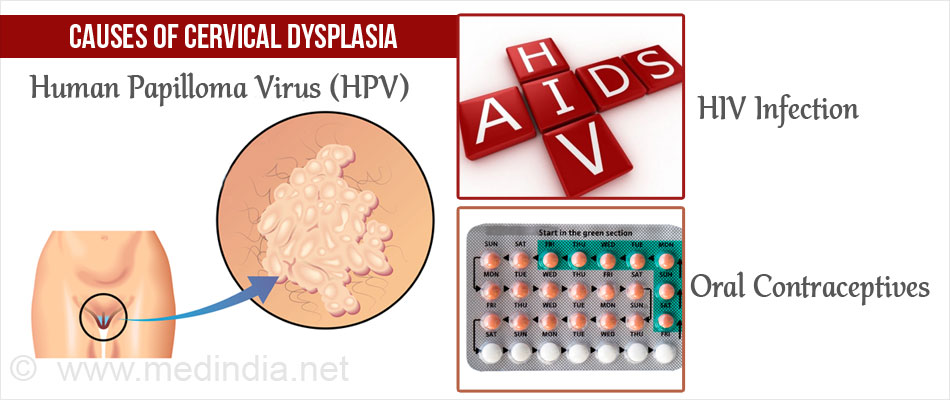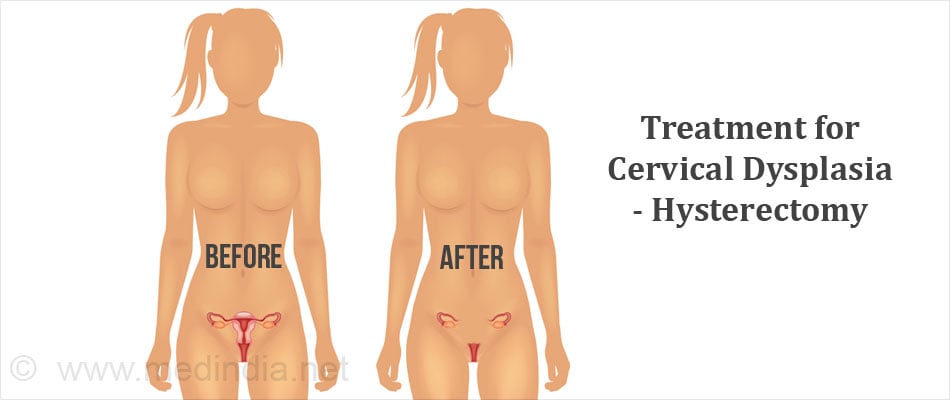- American Cancer Society - What are the risk factors for cervical cancer? - (http://www.cancer.org/cancer/cervical-cancer/causes-risks-prevention/risk-factors.html)
- American Cancer Society - Can cervical cancer be prevented? - (http://www.cancer.org/cancer/cervical-cancer/prevention-and-early-detection/can-cervical-cancer-be-prevented.html)
- SOGC joint clinical practice guideline: Colposcopic Management of Abnormal Cervical Cytology and Histology, No 284, Dec 2012, Journal of Obstetrics and Gynaecology
- Centers for Disease Control and Prevention: HPV vaccines - (https://www.cdc.gov/hpv/parents/vaccine.html)
- WHO guidelines: WHO guidelines for screening and treatment of precancerous lesions for cervical cancer prevention. - (https://www.guideline.gov/summaries/summary/49521)
- American Cancer Society, American Society for Colposcopy and Cervical Pathology, and American Society for Clinical Pathology screening guidelines for the prevention and early detection of cervical cancer, 2012 - (https://www.guideline.gov/summaries/summary/36834/american-cancer-society-american-society-for-colposcopy-and-cervical-pathology-and-american-society-for-clinical-pathology-screening-guidelines-for-the-prevention-and-early-detection-of-cervical-cancer)
- Use of Primary High-Risk Human Papillomavirus Testing for Cervical Cancer Screening: Interim Clinical Guidance, Journal of Lower Genital Tract Disease, Volume 19, Number 2, April 2015
What is Cervical Dysplasia?
Cervical dysplasia is a condition where there is growth of abnormal cells on the surface of the cervix.
This is a pre-cancerous condition as it can in some patients develop into cervical cancer.

Female Genital Tract – In Brief
The female reproductive system consists of uterus (womb) and ovaries and is present in the lower abdomen and pelvic area. Fallopian tubes connect ovaries to upper portion of uterus. The lower portion of uterus is called the cervix. Cervix opens into the vagina.
What are the Risk factors and Causes for Cervical Dysplasia?
- Human Papilloma Virus (HPV) infection - Main reason for cervical dysplasia. Majority of HPV strains are harmless. Types 6, 11 cause genital warts and types 16, 18 cause cervical dysplasia. HPV infection is normally asymptomatic. Most strains resolve within 6 months of infection, but some persist and can cause cervical dysplasia.
- HIV infection - HIV positive women whose CD4 cells are low are susceptible for getting HPV infection and cervical dysplasia. Low CD4 cells imply low immunity of the body.
- Reduced immunity status - Women undergoing chemotherapy, having cancer, TB, on anti-organ rejection drugs etc. are more prone to develop HPV infections and subsequently cervical dysplasia. Poor nutrition can also reduce immunity.
- Having multiple sexual partners
- Engaging in sexual activity before 18 years of age
- Occurrence of other sexually transmitted infections like chlamydia, gonorrhea, Cigarette smoking
- Oral contraceptives: This is due to inhibition of folic acid metabolism in cervical cells (Folic acid reverses cervical dysplasia).

What are the Symptoms of Cervical Dysplasia?
Cervical dysplasia does not usually cause any symptoms. It is found incidentally on Pap smear.
Some patients may have following symptoms:
- Bleeding in between menstrual periods (intermenstrual bleeding /spotting).
- Bleeding during/after sexual intercourse (Post coital bleeding)
- Abnormal vaginal discharge
- Low back pain
- Lower abdominal pain
- Genital warts
How is Cervical Dysplasia Diagnosed?
As cervical dysplasia and cervical cancer occur over a period of time, regular screening by Papanicolaou test (Pap smear) is recommended.
The American Cancer Society recommends Pap smear for all women when they reach 21 years of age. If result is negative, it should be repeated every 3 years until the woman reaches 65 years of age. If test result is abnormal it should be repeated at 6-12 months and further diagnostic tests should be done to diagnose cervical dysplasia.
How is Pap smear Done?
It is an outpatient procedure without any anesthesia. A speculum is first inserted into the vagina. With the help of a brush or spatula, cells from outside the cervix are scrapped. These cells are smeared on a slide and studied under the microscope to look for abnormal cells.
Women who have unclear, borderline or abnormal results on Pap smear will have to undergo further diagnostic tests.
What are the Other Diagnostic Tests for Cervical Dysplasia?
- Colposcopy: The doctor uses a bright light and a special microscope which is inserted into vagina to visualize the cervix, vagina and vulva. Diluted acetic acid is applied first to cervix. Under the bright light normal tissue appears pink and abnormal areas appear white
- Cervical biopsy: A small tissue sample is taken from the white areas during colposcopy. This is then sent to laboratory for examination by pathologist.
- HPV DNA typing: Swab of cervical cells is taken to differentiate between high risk and low risk strains.
What is Meant by Cervical Dysplasia Staging?
Staging of cervical dysplasia is done to evaluate the degree of the abnormal changes. It is done by examining the Pap smear or tissue obtained by biopsy microscopically.
Bethesda system and CIN grading system are the two systems used:
- Bethesda system is based on Pap smear results. Here dysplasia is described as Squamous Intraepithelial Lesion (SIL). The thin flat cells on the outer surface of the cervix are called Squamous Cells. When normal cells of the cervix are replaced by abnormal cells, it is called intraepithelial lesion. The different grades are:
- ASCUS – Atypical Squamous Cells of Undetermined Significance: Borderline Stage - shows few abnormal cells.
- LGSIL – Low Grade Squamous Intraepithelial Lesion: Mildly abnormal changes.
- HGSIL – High Grade Squamous Intraepithelial Lesions: Moderate-severe abnormal changes; also associated with Pre-cancer and cancer.
- CIN grading system is based on cervical tissue biopsy results. CIN means Cervical Intraepithelial Neoplasia, which are the actual abnormal changes in the cervical cells.
- Atypia: Co-relates with the ASCUS stage of Bethesda system.
- CIN-1: Mild dysplastic changes, co-relates with LGSIL.
- CIN-2: moderate dysplastic changes, co-relates with HGSIL.
- CIN-3: severe dysplastic changes, co-relates with HGSIL.
- Carcinoma in-situ stage: Pre-cancerous stage
- Cervical cancer stage
What is the Treatment of Cervical Dysplasia?
Treatment depends on the severity of dysplasia and presence of risk factors
ASCUS, LGSIL/CIN: Often resolves spontaneously. Sometimes it may persist or may progress to CIN-2. HPV typing can be done. If the HPV typing reveals a low risk strain, then Pap smear is repeated every 3-6 months. If it is a high risk viral strain, then colposcopy and biopsy are done and managed further.
HGSIL/CIN-2 and CIN-3: These require treatment to clear the abnormal tissue. The treatment options are:
- Cryocauterization: A probe cooled with liquid nitrous oxide is used to freeze and destroy the abnormal cells. This is an outpatient procedure, anesthesia is not required. It is a safe and simple procedure, and the procedure lasts around 10-20 minutes. Recovery is within 1-2 days. The patient may have watery vaginal discharge for a few days. One disadvantage is tissue cannot be sent for biopsy.
- Carbon-di-oxide laser photo ablation: An invisible beam of light is used to destroy the abnormal tissue. This is an outpatient procedure; it lasts for about 20 minutes. Local anesthesia is given. It is more precise than Cryocauterization as the depth of removing the tissues can be controlled. It is a safe procedure; recovery is within 1-2 days. Similar to cryocauterization, the patient has vaginal discharge and biopsy can’t be taken.
- Electro cauterization/LEEP (Loop Electrosurgical Excision Procedure): High frequency and low voltage radio waves are passed through a metal loop. This electrically charged loop is used to cut through the abnormal tissue. It can be done as an outpatient procedure but under local anesthesia. It is a safe procedure, and recovery is within 2 days. The procedure lasts for about 30 minutes. Accurate diagnosis is possible as tissue sample is sent for biopsy. If all the abnormal cells are completely removed, then patient does not need further procedures.
- Cone Biopsy: A cone shaped sample of abnormal tissue is removed from the cervix. This is carried out for high grade dysplasia, recurrent dysplasia, cervical pre-cancer and cervical cancer. This is done in operating theatre, under spinal or general anesthesia. The procedure takes about 45 minutes; recovery period is within 1 week. Usually the woman notices bloody/yellowy vaginal discharge and abdominal cramps for a few days after the procedure. Accurate diagnosis is possible as tissue is sent for biopsy. If biopsy reveals complete removal of abnormal tissue then further procedures are not needed.
- Hysterectomy - Uterus and cervix are surgically removed with or without conservation of ovaries. This is carried out in cervical pre-cancer, cervical cancer, high grade dysplasia and recurrent dysplasia. This is a major surgery, and done in operating theatre under spinal or general anesthesia. It can be done either through abdominal route or through vaginal route or through laparoscopy. The procedure may take 1-2 hours, recovery period is 6 weeks. Woman usually has vaginal discharge, abdominal pain and wound related problems due to surgery. There can be complications from surgery too.

What are the Complications of Cervical Dysplasia?
Cervical dysplasia when untreated can lead to cervical cancer. Cervical dysplasia once treated can recur in some patients. Hence all cervical dysplasia patients need regular follow up, and recurrence of dysplasia needs additional treatment.
Can Cervical dysplasia be Prevented?
A vaccine called Gardasil has been developed which acts against 4 serious strains of HPV – 2 strains causing 70 % of cervical dysplasia/cancer and 2 against HPV. This vaccine has been approved to be given in female children and women between 9-26 years of age. Another vaccine Cervarix acts against 2 HPV strains.
Health Tips
- Get regular Pap smears – once every 3 years if result is normal.
- Practice safe sex, use condoms to prevent contracting STD.
- Eat healthy, well balanced and nutritious food with plenty of fruits, vegetables, nuts and fish as this helps to prevent cervical dysplasia.

- Stop smoking.
- It is recommended to get vaccinated for HPV. Even though you are vaccinated you may still get cervical dysplasia from other viral strains and you will still need regular Pap smears.













